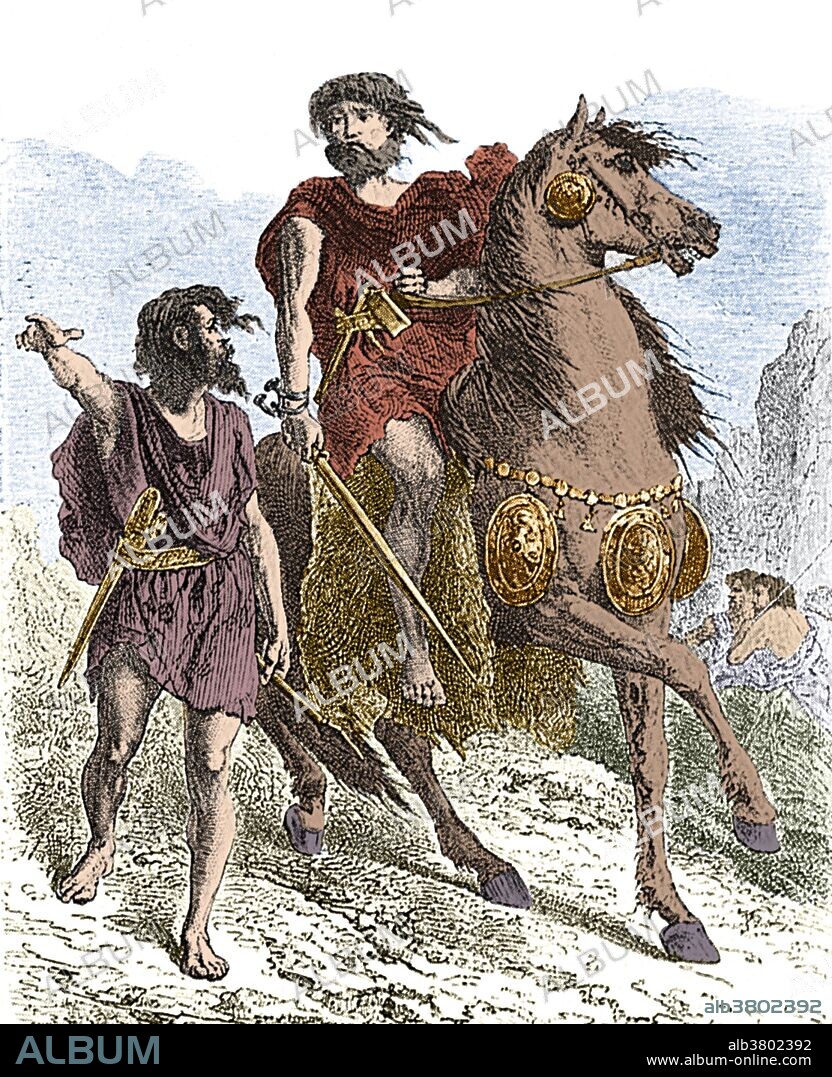alb3802392
Prehistoric Man, Bronze Age Warrior

|
Add to another lightbox |
|
Add to another lightbox |



Title:
Prehistoric Man, Bronze Age Warrior
Caption:
Colorized illustration of a bronze age warrior. Bronze age warriors were the first knights. Horseback riding became widespread in the late Bronze Age and the men used slashing swords for fighting. The Bronze Age is a period characterized by the use of copper and its alloy bronze as the chief hard materials in the manufacture of some implements and weapons. Chronologically, it stands between the Stone Age and Iron Age. Humans learned how to smelt, melt, cast, rivet, and to forge copper and bronze. Bronze Age swords appear from around the 17th century BC, in the Black Sea region and the Aegean, evolving out of the dagger. They are replaced by the Iron Age sword during the early part of the 1st millennium BC. Bronze Age swords were strong, but not brittle. They would bend, rather than break, in battle. The blades were shaped as to get the maximum strength out of the material, while still affording balance and cutting/thrusting ability.
Credit:
Album / Science Source
Releases:
Model: No - Property: No
Rights questions?
Rights questions?
Image size:
2958 x 3640 px | 30.8 MB
Print size:
25.0 x 30.8 cm | 9.9 x 12.1 in (300 dpi)
Keywords:
ANTHROPOLOGICAL • ANTHROPOLOGY • ART • ARTWORK • BRONZE AGE • BRONZE SWORD • CAVE DWELLER • CAVE MAN • CAVE MEN • CAVEMAN • CAVEMEN • COLORED • COLORIZED • DRAWING • EARLY HUMAN • EARLY MAN • ENHANCED • ENHANCEMENT • EVOLUTION • EVOLUTIONARY • EXTINCT • FIRST KNIGHTS • HISTORIC • HISTORICAL • HISTORY • HORSEBACK • HORSEMAN • HORSEMEN • HUMAN EVOLUTION • HUMAN SPECIES • ILLUSTRATION • LEGENDARY • MALE • MAN • MEN • MOUNTED ON HORSE • NEANDERTHAL PEOPLE • PALAEONTOLOGY • PALEONTOLÓGICAL • PALEONTOLOGY • PERIOD: BRONZE AGE • PREHISTORIC MAN • PREHISTORIC • PREHISTORICAL • PREHISTORY • PRIMITIVE MAN • RIDING HORSE • SADDLE HORSE • SCIENCE: EVOLUTION • SLASHING SWORD • SOLDIER • SWORD • TROGLODYTE • WARRIOR • WEAPON • WEAPONARY
 Pinterest
Pinterest Twitter
Twitter Facebook
Facebook Copy link
Copy link Email
Email

